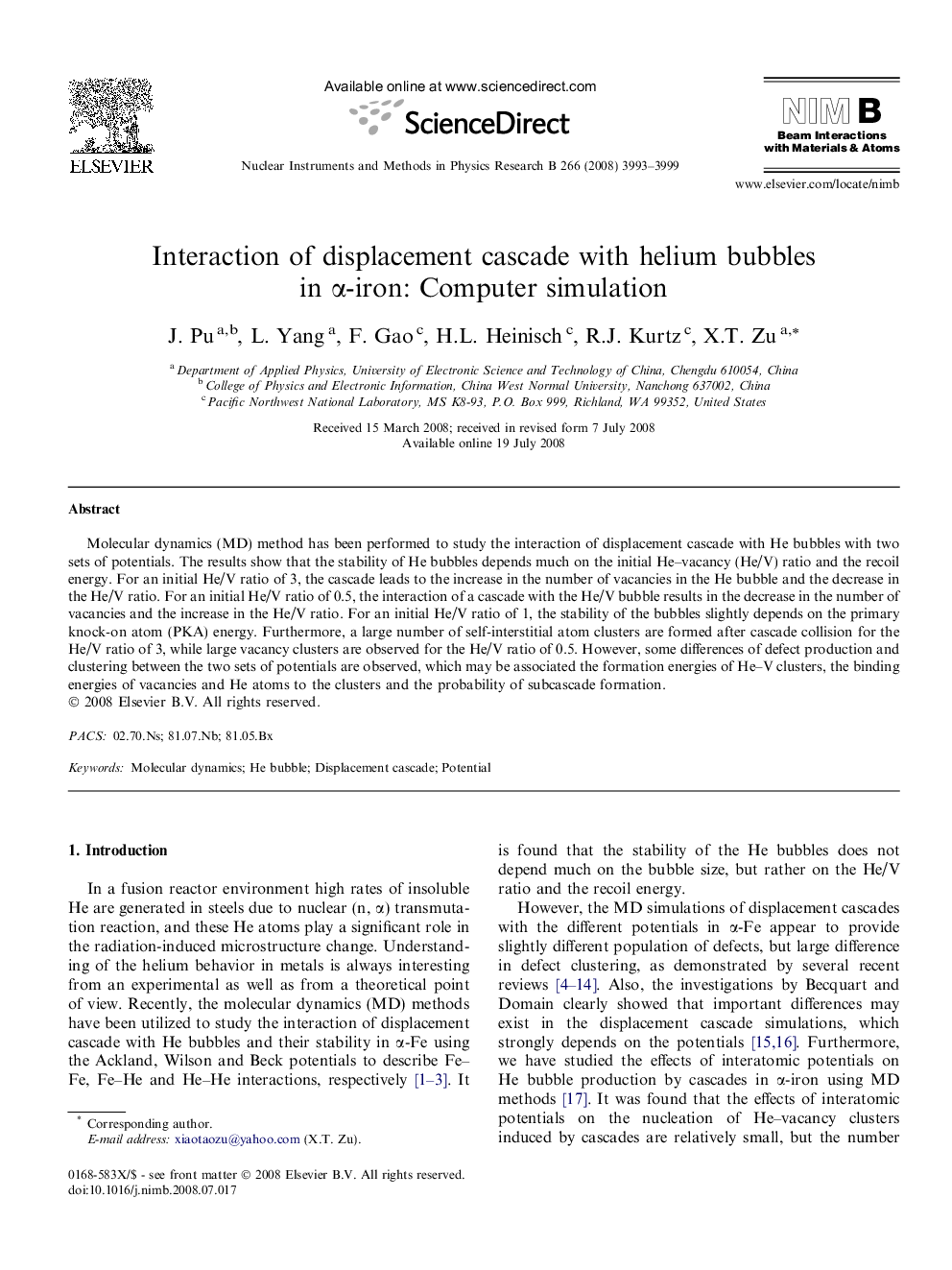| Article ID | Journal | Published Year | Pages | File Type |
|---|---|---|---|---|
| 1684835 | Nuclear Instruments and Methods in Physics Research Section B: Beam Interactions with Materials and Atoms | 2008 | 7 Pages |
Molecular dynamics (MD) method has been performed to study the interaction of displacement cascade with He bubbles with two sets of potentials. The results show that the stability of He bubbles depends much on the initial He–vacancy (He/V) ratio and the recoil energy. For an initial He/V ratio of 3, the cascade leads to the increase in the number of vacancies in the He bubble and the decrease in the He/V ratio. For an initial He/V ratio of 0.5, the interaction of a cascade with the He/V bubble results in the decrease in the number of vacancies and the increase in the He/V ratio. For an initial He/V ratio of 1, the stability of the bubbles slightly depends on the primary knock-on atom (PKA) energy. Furthermore, a large number of self-interstitial atom clusters are formed after cascade collision for the He/V ratio of 3, while large vacancy clusters are observed for the He/V ratio of 0.5. However, some differences of defect production and clustering between the two sets of potentials are observed, which may be associated the formation energies of He–V clusters, the binding energies of vacancies and He atoms to the clusters and the probability of subcascade formation.
